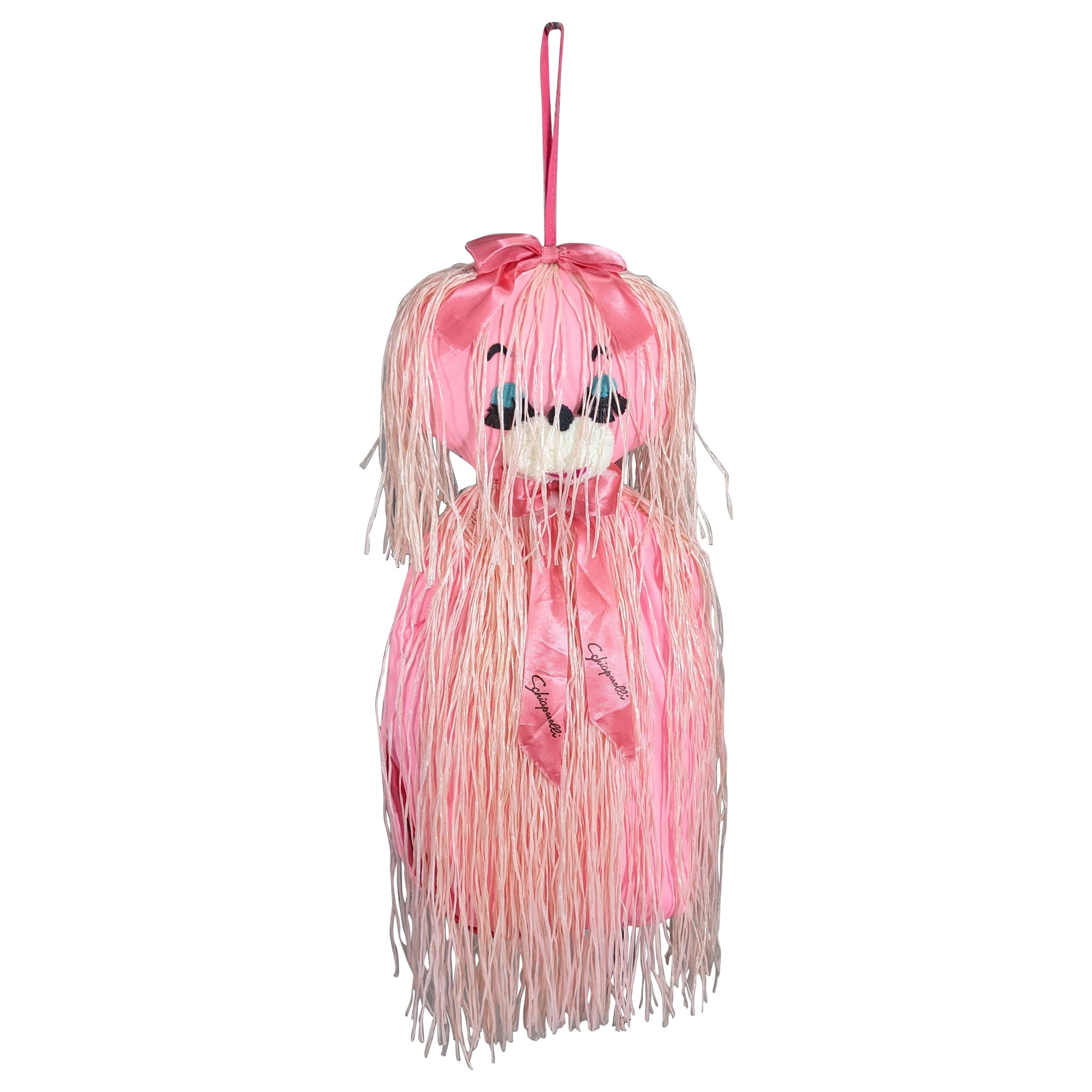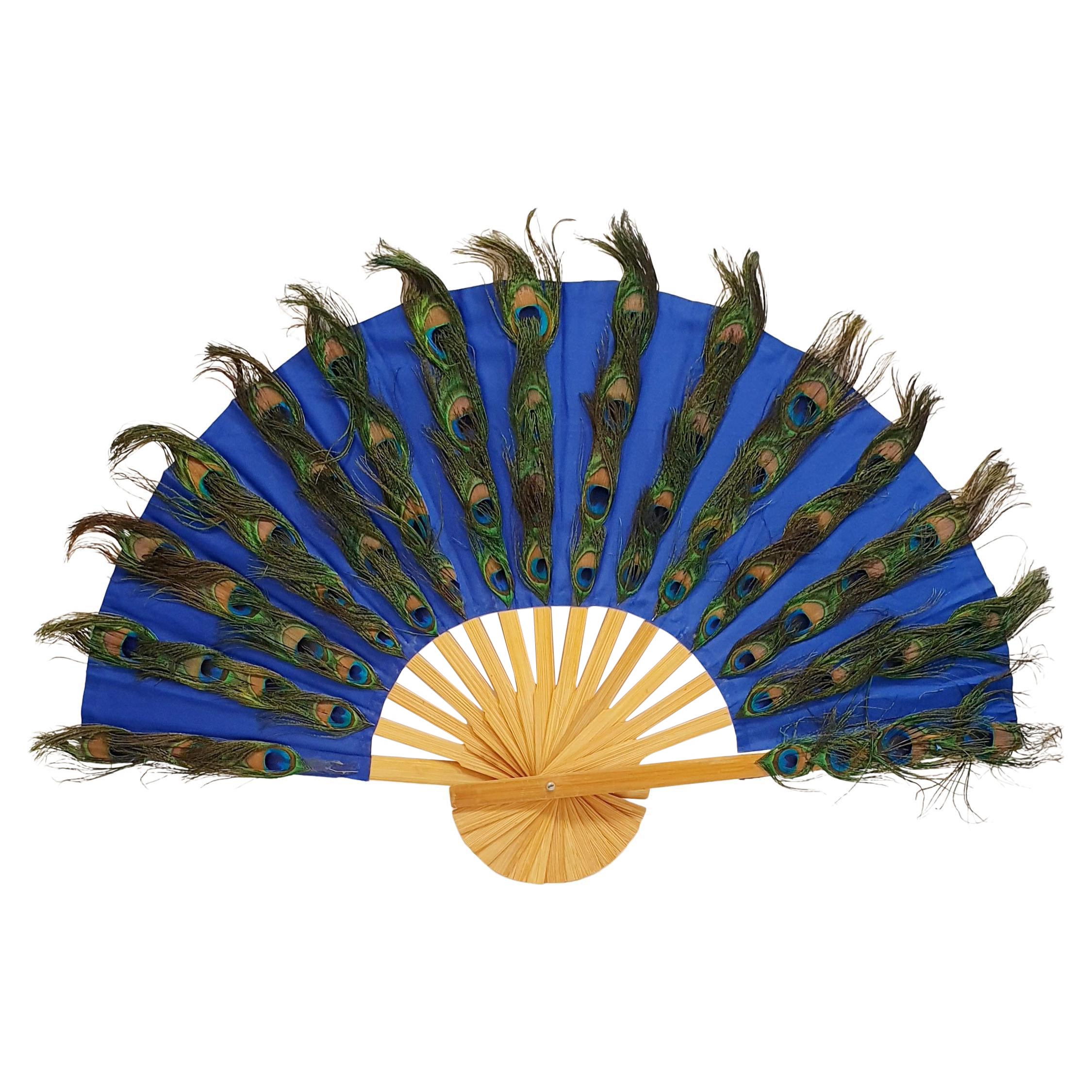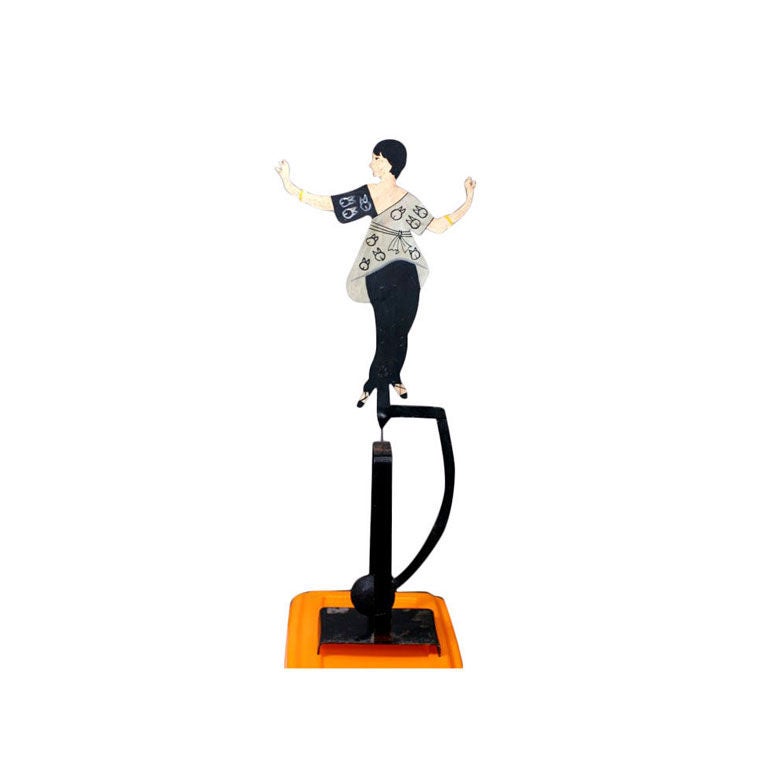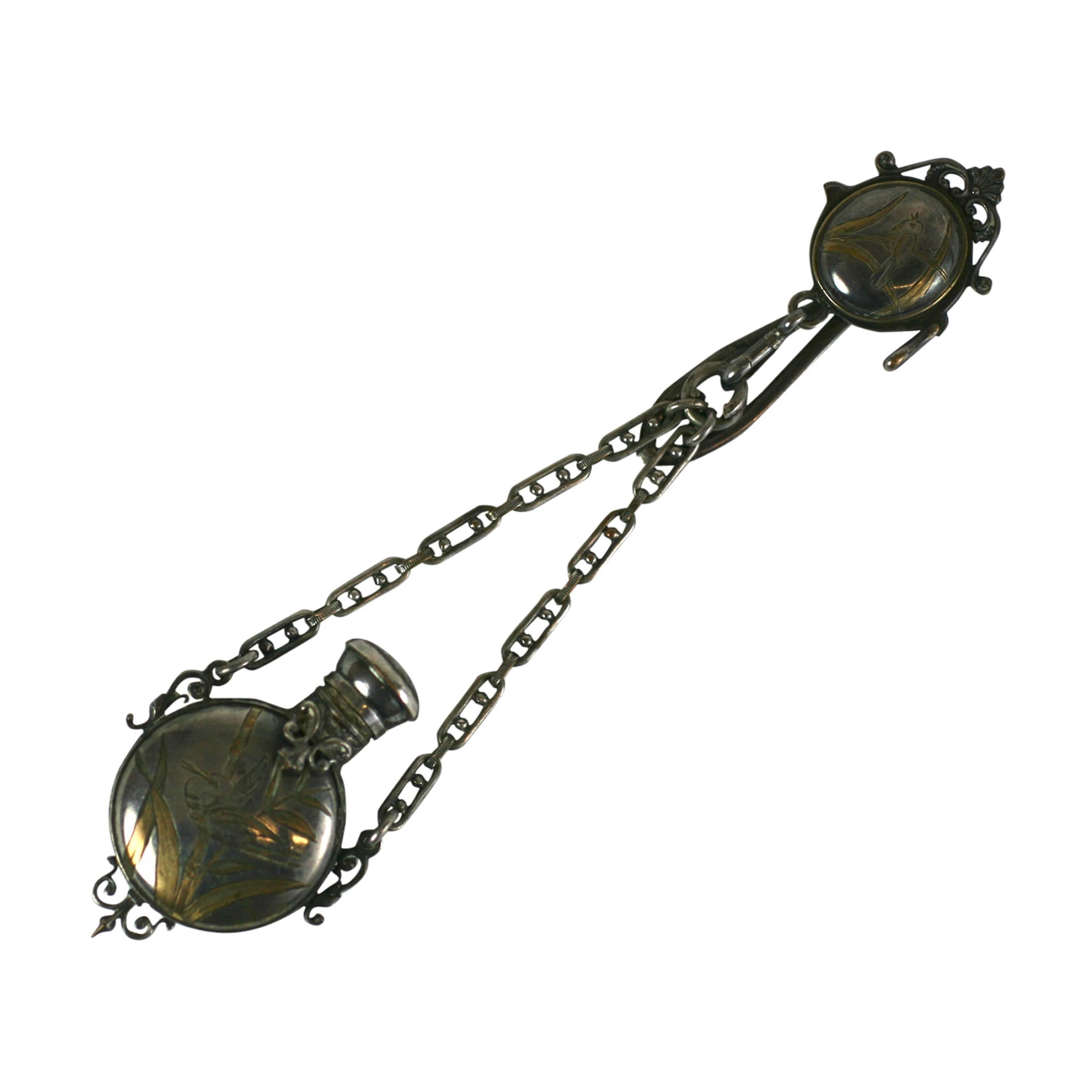Items Similar to France LimitedEdition 1878Mignot 9LeadFigurines BoxSet Can-CanStageBar Curiosity
Want more images or videos?
Request additional images or videos from the seller
1 of 13
France LimitedEdition 1878Mignot 9LeadFigurines BoxSet Can-CanStageBar Curiosity
About the Item
Titled "French Can-Can", this rare limited-edition signed boxed unfolding-stage complete set with nine miniature hand-painted lead and pewter cabaret figurines was originally a one-of-a-kind "depose" creation in the late 19th-Century by the last French lead toy-soldier manufacturer Mignot, which was the incorporated business since 1825 of the Parisian toy-maker C.B. G that was founded in the late 18th Century. As a vintage set by the legacy company CBG Mignot--which acquired the figurine matrixes made until 1940 to handcraft reproductions since the late 20th Century--it was purchased by its collector in the 1990s from the owner of Berthillon, a famous Parisian candy-and-ice-cream shop on the Ile-de-la-Cite. It is rare to find more than one figurine from this edition.
For those who may not be serious collectors of historical figurines or French memorabilia, we think it would make a fun curiosity for an accessible shelf near a bar or desk.
With the red textured-paper-covered thick-cardboard cover removed, one side of the rectangular box falls to enable ample room to view the three-walled dance-theatre that features a printed-paper raised wooden stage and decorative rug surrounded by wallpaper audiences and an elegant performance backdrop. The box includes six intricate figurines, along with a white table and two chairs. As an alternative to seating the male and female patrons on the edge of the stage, the furniture can be useful--unless you wish to playfully suggest a bar fight involving the lone standing man.
The nine movable objects are dominated by three sturdy larger and heavier pewter Can-Can dancers. The figurines are in good vintage condition with minor loss of paint at some edges. The thin-framed furniture is delicate, while the fragile stem of the table must be handled with care when positioned to balance on a flat surface. The size noted in the Measurement Units section is for the closed box. While photographed, the red top of the box lid is darker in one spot above the branded text.
The exterior multicolor sticker is printed “C.B. G, Fabrique Francaise, Marque De Fabrique, Argent Paris 1878, Paris 1889 Member du Jury Hors Concours, Or Paris 1900”. This means that the original novelty was created by Mignot for its award-winning display at the Paris International Exhibition in 1878.
The physically-demanding Can-Can is a traditional chorus line of skirted female dancers recognized for executing many high kicks and acrobatics that temporarily reveal their legs, which became a popular form of adult entertainment for couples by the mid-1800s.
Beyond individual figurines referencing history, limited-edition boxed sets by CBG Mignot were mostly military themed and have been in high demand by contemporary collectors since Malcolm Forbes publicized his extensive Mignot armies.
- Dimensions:Width: 5 in (12.7 cm)Depth: 3.5 in (8.89 cm)Length: 7.5 in (19.05 cm)
- Style:Victorian (In the Style Of)
- Place of Origin:
- Period:
- Material Notes:hand-painted lead and pewter figurines for boxed printed-paper stage set
- Condition:Wear consistent with age and use.
- Seller Location:Chicago, IL
- Reference Number:1stDibs: LU3244219203272
About the Seller
5.0
Vetted Seller
These experienced sellers undergo a comprehensive evaluation by our team of in-house experts.
Established in 2012
1stDibs seller since 2022
9 sales on 1stDibs
Typical response time: 1 hour
- ShippingRetrieving quote...Ships From: North Adams, MA
- Return PolicyThis item cannot be returned.
More From This SellerView All
- MontblancMeisterstuckClassique Germany Gilt BlackResin Rollerball Pen with InkBy MontblancLocated in Chicago, ILThe best-known writing instrument of all Montblanc collections, this Meisterstuck Classique features six gilt rings and clip on the black-resin rollerball pen with a pull-off cap, un...Category
20th Century German For The Desk
- Antique Japanese WovenSilk PaintedCeramicOjimes Beadwork Embroidery InroLocated in Chicago, ILThis rare antique Edo-period (1615-1868) Japanese handmade inro is a curved lozenge-shaped hand-dyed woven-silk hard carrying-case container sheath that features intricate embroidery with rock-crystal or glass beadwork and thin leather-wrapped thread appliques. For its "Kimono Style" exhibition, TheMet museum noted: "the dying, weaving, and embroidery techniques for which Japan is famed reached their peak of artistic sophistication during the Edo period." On the burgundy finely-braided silk obijime cord that suspends the inro hang adjustable ojime fasteners of glazed earthenware, which are hand-painted with underglaze and overglaze enamels. The imagery includes signature-like branches, mountains, and a pine tree. Each knotted end of the cord dangles from the bottom of the inro with two rice-paper tubular beads. We could not find any Japanese beads...Category
18th Century Japanese Decorative Objects
- Hermes Designer Adnet 1920s French ArtDeco Set 6ShotGlass Metal&Rosewood CarrierBy HermèsLocated in Chicago, ILWith characteristic combination of materials, construction, and sleek shape by French designer Jacques Adnet before he gained fame designing furnishings for Parisian luxury fashion h...Category
1920s French Barware
- Couture TextileArt Vienna Austria ArtistSigned Vintage Brocade&Silk TeddyBearToyLocated in Chicago, ILAs unique vintage handcrafted textile art including a 20th-Century tag with its artist signature, Vienna-Austria origin and stuffing content, this multi-color "clown" teddy bear has ...Category
20th Century Austrian Toys
- LimitedEdition Vase AperitifGlass JeanNouvel 2002 Signed for French LiqueurSuzeBy DaumLocated in Chicago, ILAs a signed and 2002-dated limited edition, French architect and furnishings designer Jean Nouvel was commissioned to create this yellow-accented vase or aperitif glass for one of th...Category
Early 2000s French Vases
- Carder Steuben Rare ThickLipWrapApplication CrystalCased Amethyst Bubbly VaseBy Steuben GlassLocated in Chicago, ILThis antique ArtDeco-period Steuben mostly purple glass vase designed by its co-founder Frederick Carder is a colorless-crystal-cased "Transparent Amethyst Bubbly" type with colorless crystal decoration including a rare cut lip-wrap with thick undulating application that adds up to a 3.5-inch-diameter flat rim, along with a smooth casing over a rare see-through twisted linear air-trap pattern with a wider 4-inch hip near the footless bottom. Weighing 625 grams, the short heavy vase is a hybrid matching Steuben shape-numbers 7273 with its variety of colorless cut-crystal lip-wrap decoration and 7036 with its colorless cut-crystal casing. These like forms were produced in multiple colors/shading and patterns with or without a foot and/or decoration in a wide variety of hybrid techniques that are characteristic of the designs by Carder. The 7000 series was among the last produced by Carder before his 30 years as artistic director since 1903 came to an end based on the board decision of Steuben parent-company Corning Glass Works to abandon color by 1933 and move forward using only progressive optical glass with colorless brilliance. The Carder Steuben Glass Association has published for its online shape-index a handful of approximately 10-inch-tall 7273/7036 versions, along with similar shorter shapes like the 8.25-inch 7083 vase and 7 5/8-inch 7206 "Bubbly" vase, along with the much earlier 1153 salt-and-pepper shakers of about half that size but of unlimited dimensions in a vague line drawing. A photo of one 1153-variation shows them with perforated metal caps at 3.5-inches tall in "Transparent Amethyst" like our vase, but with optic ribs instead of air-trapping. Despite the early line drawing, it is most likely that our vase was made in the late 1920s to early 1930s when Carder designed air-trap pieces with coarser glass particles and heavier crystal casing and applications. In the 1974-published book featuring only museum-quality glass works, Steuben: Seventy Years of American Glass Making, its pages 42-43 highlight a similar unmarked photographed Cluthra vase...Category
Early 20th Century American Vases
You May Also Like
- Rare Surrealist Schiaparelli Figural Cat Lingerie BagBy Elsa SchiaparelliLocated in New York, NYRare and unusual figural Surrealist Elsa Schiaparelli lingerie bag. This amusing, rare Schiaparelli figural cat lingerie bag is made of bright pink acetate, with "Shocking" Pink ribbon accents and long pink raffia fringe. With a white plush snout and hand cut felt eyes eyebrows and mouth. Excellent Condition. Signed, Zipper Entry on back. Length 18" x Wide 9". 1950's. Schiaparelli, "I gave to pink, the nerve of the red, a neon pink, an unreal pink, Shocking Pink". Yves Saint Laurent: Schiaparelli's pink was "an aggressive, brawling, warrior pink” Elsa Schiaparelli's "Shocking" Pink was a color which derived from a 17.27 carat rose colored Cartier diamond known as the Tete de Belier, belonging to her friend and client, Daisy Fellowes. Shocking Pink was used for the eponymous perfume "Shocking", which was launched in 1937. The packaging was designed by artist Leonor Fini and the bottle was based on Mae West's curvaceous figure. Her first shoe-hat, designed for her autumn 1937 collection, had a Shocking Pink heel. Salvador Dali loved...Category
1950s French Curiosities
- Peacok Feathers Fan in natural barnished pine woodLocated in Bilbao, ESMedium Peacok Feathers Fan in natural barnished pine wood Open 60cm X 30cm / 23,62in x 11,81in Ideal for cocktails and galas, for dancing and for breezing in hot weather. In stock...Category
21st Century and Contemporary Spanish Decorative Objects
- Large Peacok Feathers Fan in natural barnished pine woodLocated in Bilbao, ESLarge Peacok Feathers Fan in natural barnished pine wood Open 75cm X 45cm / 29,52in x 17,71in Ideal for cocktails and galas, for dancing and for breezing in hot weather. In stock ...Category
21st Century and Contemporary Spanish Decorative Objects
- Paul Poiret Mobile of Painted and Lacquered Tole 1913By Georges LepapeLocated in New York, NYA perfect mixture of fashion and the decorative arts. An image by Georges Lepape originally for the Gazette du Bon Ton,September 1913 forms this amusing metal mobile in a collaborati...Category
Early 20th Century French Art Deco Curiosities
- Victorian Perfume Chatelaine in the Japanesque TasteLocated in New York, NYVictorian Perfume Chatelaine in the Japanesque taste, popular in the late 19th Century. Silver plated with partial gilding as highlighting for the A...Category
Late 19th Century American Curiosities
- Carved Bakelite Art Deco Elephant Dress SuiteLocated in New York, NYAmazing Carved Bakelite Art Deco Elephant Dress Suite from the 1930's. Huge pair of hand carved elephant heads set with jet eyes form a buckle with a set...Category
1930s American Curiosities





